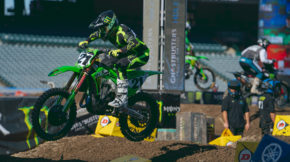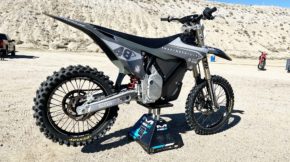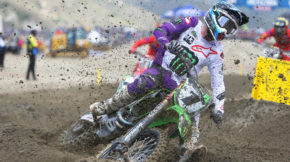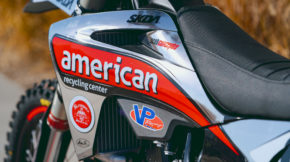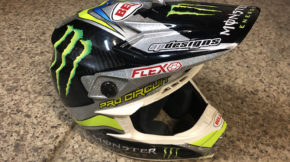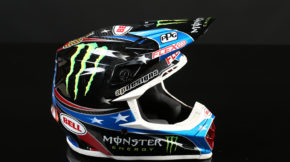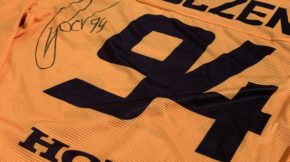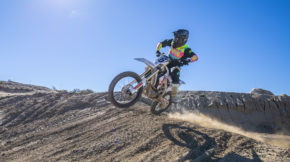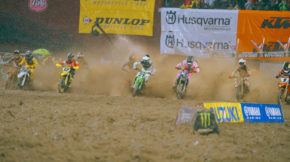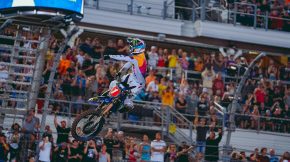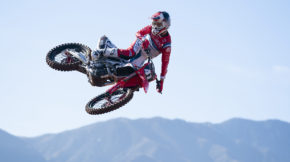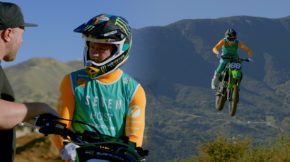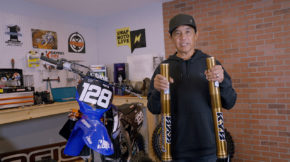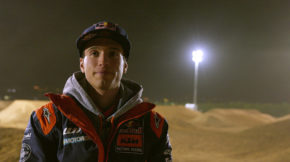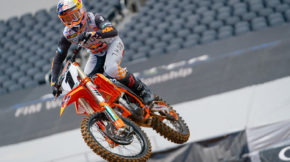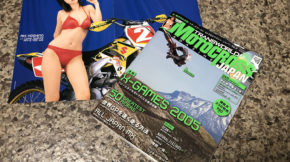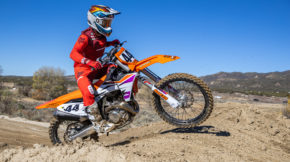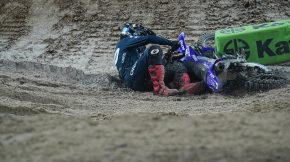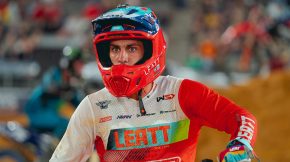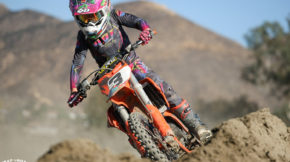Kickstart | Supercross Restart Details
Share
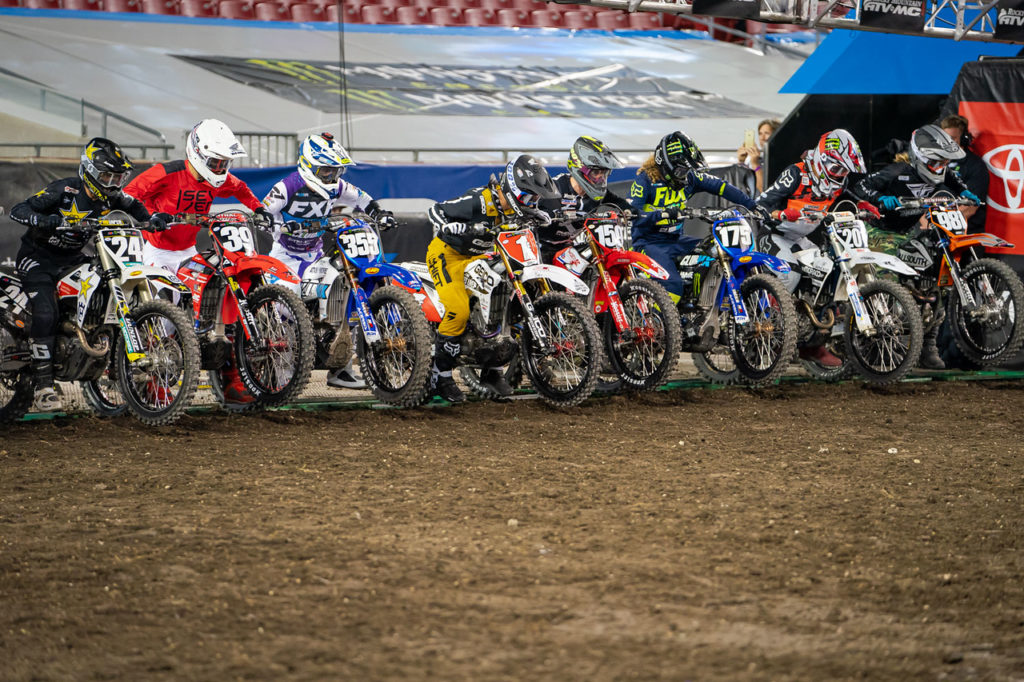
INSTAGRAM | @swapmotolivedotcom
INSTAGRAM | @swapmotolive
It’s happening. It’s really happening. Less than 24 hours after the plan to conclude the 2020 Monster Energy Supercross Series was announced, Feld Entertainment conducted a call-in press conference with members of the media and Dave Prater, the Senior Director of Two-Wheel Operations at the company. Over the course of an hour, Prater explained the importance of bringing riders back to the starting line, the challenges that have been faced due to COVID-19, how Salt Lake City earned the honor as host city, and the critically important measures that all must adhere to for the seven-race sprint to take place. To say this is a landmark moment in the sport’s history would be an understatement; with this plan, Supercross will become the first professional sport to take place on a consistent basis in the US and will set the precedent for mainstream sports that hope to return to action in the coming months.
SALT LAKE CITY
Like we mentioned last week, the ties Supercross has with the Utah Sports Commission proved to be key in all of this happening. The Commission sponsors the series in order to hype the state as a destination for all sports, and they helped Feld get the health and safety program they had created in front of the proper officials. It’s no secret that Feld Entertainment tried to get the seven-race approved in other region but due to a multitude of factors, including spikes in cases and stadium availability, the plan was unable to be approved until just recently. Governor Gary Herbert was even involved in the process and the entire program, from testing to the venue itself, will be run with help from the University of Utah. Without this relationship, this whole thing might not have been possible.
“It came down to the green light, who would give us the green light first,” said Prater. “Obviously, it helps that we have a longstanding relationship with the Utah Sports Commission and the Governor. Those guys worked their tails off to come up with a plan that keeps everyone safe, not only the people that participate in the event but also the residents of Salt Lake City and Utah. That’s what tipped the scale. The other states were working just as a hard, but it just ended up that Salt Lake was the one that gave us the green light first.”
TESTING
Feld stated that all attendees, including riders and teams, will be required to take and pass a COVID-19 test in the state of Utah and show proof before being granted access to the venue. Getting the test results back takes about 48 hours, so they will be advised to head to Utah a few days prior so that they can take the test and get the results logged before the first race on May 31. This 48-hour turnaround is very important, as it’ll largely determine if people leave the state of Utah during the three-week span. More on that in a second. All will be required to have their temperatures taken upon arrival to the stadium-pit area each day in order to monitor the situation. Testing should only occur one time, something that Feld is sorting out the final details of right now with the University of Utah and the state health officials.
In addition to the initial test and temperature check, attendees will be asked to sign an agreement with Feld that they will adhere to safety standards that will be in place. Remaining in Utah for the full duration of the three-week span will be encouraged by Feld, as it’s part of the agreement that’s in place to hold the races, but they acknowledged there is no certain way that they can police riders or teams from leaving the state. “It would be though with the cadence of the races, to leave and come back. As far as tracking the athletes, they’re going to sign the health and safety commitment and we’re going to take them at their word that they are going to do that. If you leave the state and come back, obviously if it’s a flight we’ll know, but we’re going to take them at their word,” explained Prater.
The tight timeframe of races (Sundays and Wednesdays) will likely be enough to deter anyone from coming and going, plus the fact that anyone who leaves the state will be required to take another COVID-19 test upon return and wait 48-hours for the results to come back. No need to run the risk of being barred entry for a short spell at home, especially if you’re a 450 rider that will be on the line for all seven rounds.
Which leads us to the ultimate question: what happens if someone tests positive for COVID-19 or comes to the track with a temperature? Prater explained that in the case of a positive test or high temp read, the person will be permitted to take a second test within 72 hours as long as their temperature does not reach or exceed 100.4 degrees. If they test positive a second time or have a temperature, they will be required to quarantine in Utah for 14 days. If they take a second test and it comes back negative, plus their temperature is below 100.4, they will be allowed access into the property. Status in the championship standings will not have any impact on this: if a racer tests positive, they will be barred entry and not allowed to race. The same applies to team members, but a positive test result by one member of the team does not mean the entire team will be sidelined.
Prater then went on to clarify that the entire program is not liable to be stopped by one positive test. There are multiple back-up plans in place should tests come back positive and that Feld will do everything in their power to make sure the races continue on. This brings massive peace of mind that this thing could be stopped by one person alone, but he did say that there are backup plans should things go seriously awry, including calling it a championship at whatever point necessary.
ON-SITE & AT THE RACES
The testing is just the start of the program. A hard limit of 900 people will be permitted on the property, which includes riders-teams-race direction personnel-medics-NBC-media, and all will be required to maintain social distancing at all times. Teams will have a cut back on the number of people able to be on-site, which will be designated as “groups” and must be submitted to the event staff prior to the races, and there will be restrictions on interactions between individuals of different groups when on site. That means staff from Honda will not be able to mingle with the staff of Kawasaki, and so on. Everyone will be required to have a face mask on at all times, except for riders when on the track.
Talk a few weeks ago was that there will be limits to the number of people on the floor, which will limit the rider-mechanic interactions on the starting line and the entire post-race podium procedures. Prater explained that there will be no mass gatherings around the stage after the race, which means no swarm of people high-fiving or celebrating the results. Expect to see television interviews to look a little different, too, because there will be guidelines to keep riders and reporters separate.
One of the draws of Supercross is that every round is on a completely new track, a fresh slate that tests riders in new ways. Although the tight turnaround between race days leaves little time for the Dirt Wurx crew to build, Prater clarified that there will differences in the tracks at all seven rounds. Now, that could be as simple as the same general layout, but with different obstacles put in the lanes every few days, or it could be a full overhaul if time permits. “The two-day window between some of the races, that’s going to be a tight turnaround,” he outlined. “You might not see as different a track as you would from Indy to Salt Lake, but it will be a different track.” Either way, we won’t see two races on the exact same circuit.
We were told yesterday that the AMA purse money and the yearend championship bonus fund for the 450 Class have both been reduced, (22-percent and 17-percent, respectively), something that was confirmed by Feld during the phone call, but that’s to be expected given the current economic issues. Every other sport, including Major League Baseball, has been forced to take some money from the salaries of their players and employees, so this isn’t the worst news of the deal. Ticket sales are the main source of income to Feld and a lack of fans will mean that adjustments will needed to be made.
As we’ve stated in the past, this plan will limit the competition to the top-40 riders in their respective division’s point standings at the last round run (450 Class, 250 West, 250 East). This is where things get very interesting. None of the three divisions had 40 riders score points, so there were some openings to fill. Then there are the additional absences that occur due to injuries (Jordon Smith, Josh Hill, Jacob Hayes, Justin Bogle), travel out of the country before the borders closed (European riders Cedric Soubeyras, Ludovic Macler, Lorenzo Camporose), plans to only run part of the season (Australians Aaron Tanti and Jay Wilson, do-everything racer Ryan Sipes, 250 competitors in the 450 Class Chris Blose and Jerry Robin). We should have a complete list of competitors in the coming days.
The open slots were filled after some work by the AMA and the riders. Some riders that had scored points were able to be moved into their desired class (Blose will be in the 250 East Coast region), while the rest of the openings were then offered to riders with AMA numbers in the top-100. There are chances alternates could be added in if needed, but these guys were advised that it would be a big undertaking to be ready at a moment’s notice to make the trip to Utah, get tested, etc, with no promise that they would race.
There was a word that the schedule of race day practice would be different than what we’ve become accustomed to, that the early afternoon free practice would be dropped while the overall length of the timed qualifying sessions would be altered after talks with teams in relation to the race frequency, but Prater explained that will not be the case. “When we started these conversations that we’d go back to racing on a tighter cadence of racing, two races per week instead of one race per week, the initial input from teams was that they wanted abbreviated qualifying sessions and abbreviated practice, and go from there,” Prater noted. “As we’ve gotten closer, it’s gone the other way. There still will be a free practice and two qualifying sessions. We’re just working on what the timing of that will be.”
The race format will be the traditional Heat Race-LCQ-Main Event rundown, with no Triple Crowns taking place. The first four races of the Utah project will feature the 250 East Coast region, due to the fact that those riders had done fewer races to that point, then two 250 West Coast races. The top-20 riders of the two regions would be brought to the final round for the East-West Showdown. There will be no changes for the 450 Class riders; they just have to line up and race seven times.
MADE FOR TV & IMPACT ON SPORTS
Getting these races on television is crucial. Like, the entire reason this program is happening at all crucial. There is money to be made by showing these races on NBC or their respective international packages, both from the broadcast partners and through sponsor contracts that have paid segments written into them, and with no spectators allowed on-site these races will live exclusively on television. From the sound of things, the availability of timeslots on NBC’s networks helped determine the Sunday-Wednesday rotation and the race day schedule. “You always want the best possible television window anytime you’re looking to televise a sport, so Sunday was what it ended up being at this part of the year,” Prater explained. “We started with the Sunday and after locking in the Sunday, it was dictated by our window. We have until the end of June, or July 4 because that’s the first outdoor National that’s on the schedule at this moment. We wanted to give, as we always try to do, the riders and teams ample time between Supercross and the outdoor Nationals to adapt. We started with that Sunday, May 31, and that was the cadence that we had to follow.”
This will make Supercross the only professional sport happening live and on a regular basis in the United States, something that will be greatly benefitted by the television package and could draw new fans to the sport. It’s an opportunity that the Feld crew and NBC are excited to have and one they want to make the most of. “For the first race and the last race, the first hour will be broadcast on NBC Sports and the second two hours on the NBC network. That’s going to be huge for us. We’re really going to be on those Wednesdays and Sundays, one of, if not the only live sport on television.”
That puts a new amount of attention on the entire project. What Supercross does will be what other sporting organizations will look to replicate when it comes time for their seasons to restart, and it should come as no surprise that there has been a lot of back and forth between individuals at Feld and other leagues. “It’s really pulled everyone together within the industry, not only the motorcycling industry but just the sports industry in general. We’ve been in communication with multiple leagues, we’ve shared plans, and they’ve shared plans and ideas with us,” Prater explained. “All of us were letting the health departments, the CDC, and the Governor’s offices lead the way as far as plans go, but there has been great insight we’ve gained from other leagues and vice-versa. There are a lot of leagues watching NASCAR this weekend and then us the following weekend get back at it.”
BACK TO WORK
Lastly, and maybe most important, is the fact that we’re going racing at all. Yes, Feld stands to make money off of this whole thing, but so do many people in the industry who count on professional racing for their incomes. Getting back to the track means teams get paid by sponsors, riders and mechanics get paid by teams, and even people like us continue to collect advertising revenue from the content we produce. Putting these races on is a massive responsibility that Feld has not taken lightly and their press release clearly said that they know racing is good for the industry as a whole. Will it be what we’ve come to expect after however many years at the races? No, but nothing is still the same as it was before this all started. We applaud those in positions of power for their efforts at getting this to even be remotely possible, let alone a plan with a set start and end date, plus the essential details like testing and monitoring.
This is only the start of things, though. Feld putting out their plan to hold seven races gives everyone, from industry personnel to dedicated fan, something to look forward to but it only has us taken care of until the end of June. After that, it’ll be up to MX Sports to pull off their plans for the Lucas Oil Pro Motocross Championship from July to October, or else there will be no full-time pro racing in the United States until January 2021 (the MXGP scene won’t restart until August at the earliest). That’s six months between gate drops, but four months between the end of SX and the normal preseason ramp-up. A lot of things have to go right from now through June, and then through October, for all of us to maintain some sense of normalcy and it’ll take a community effort to make sure it all goes the right way. As cliche as the saying is, we truly are in this together.
















